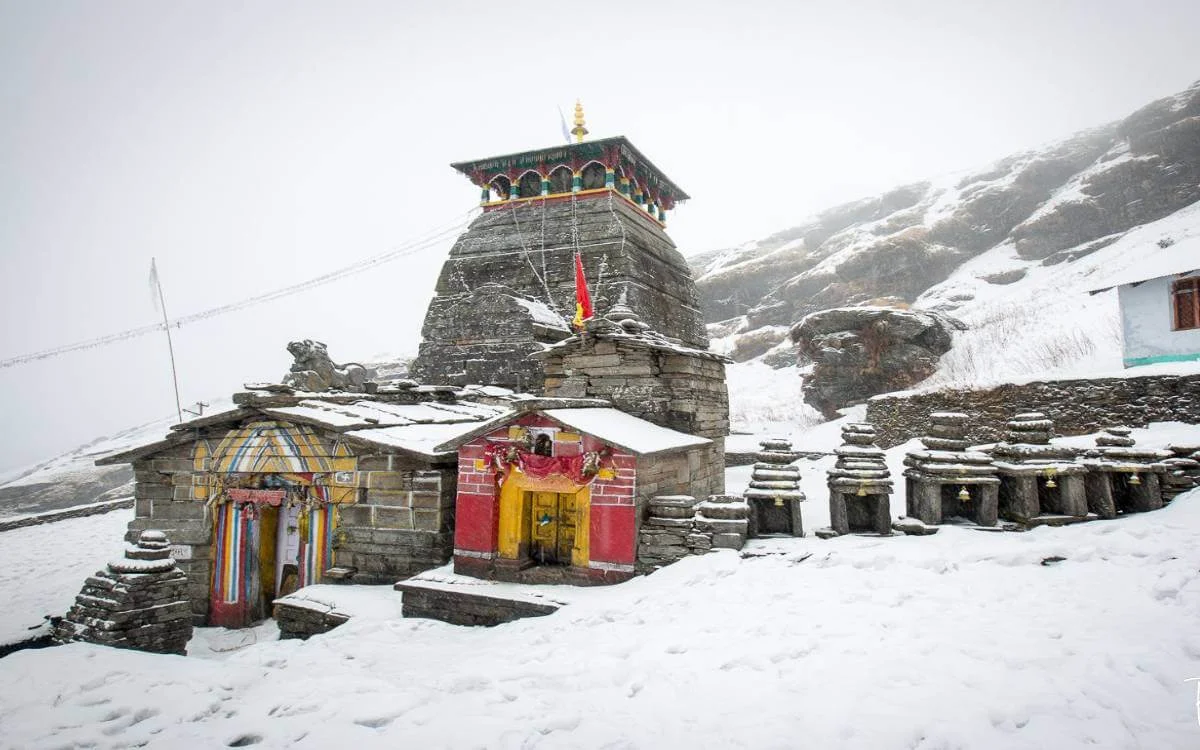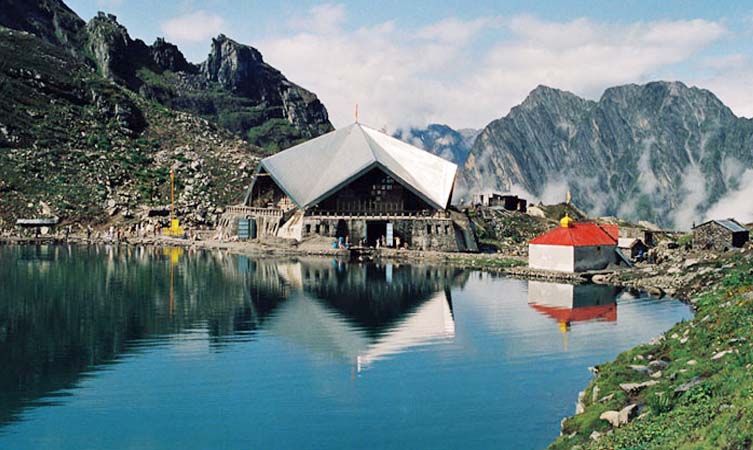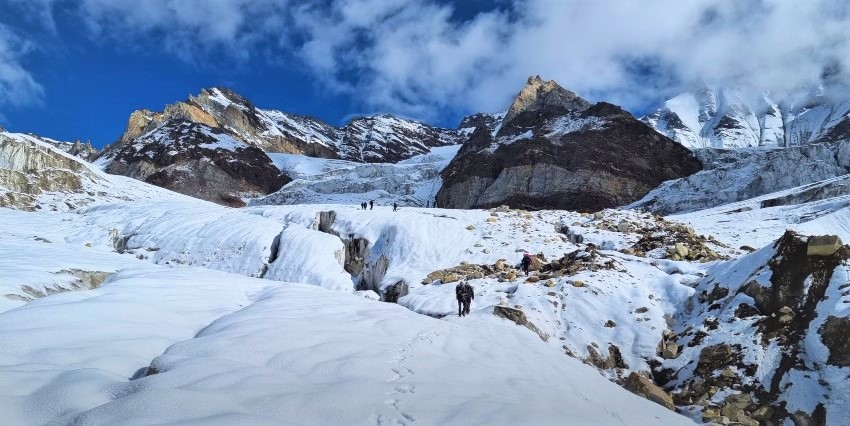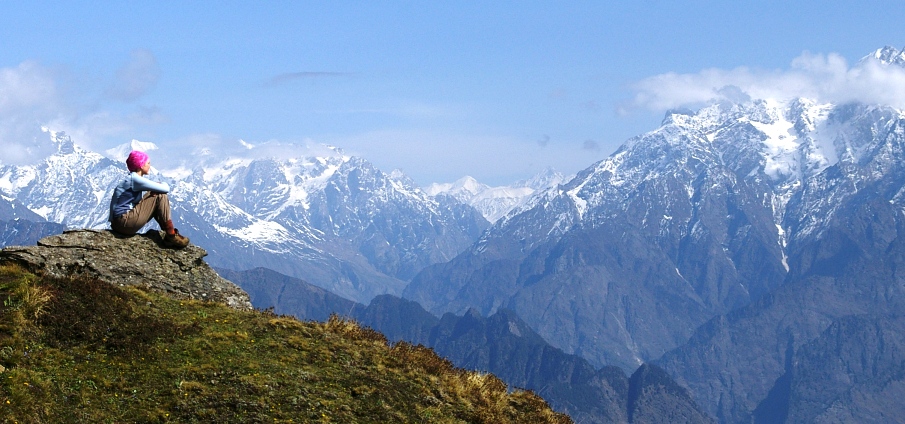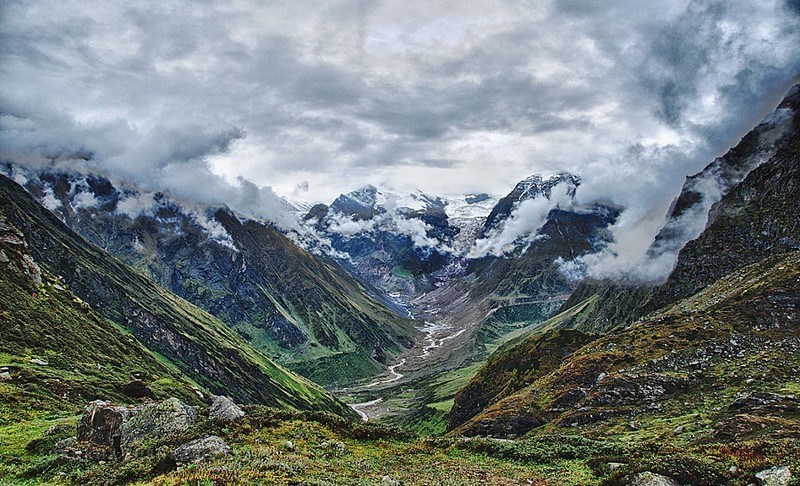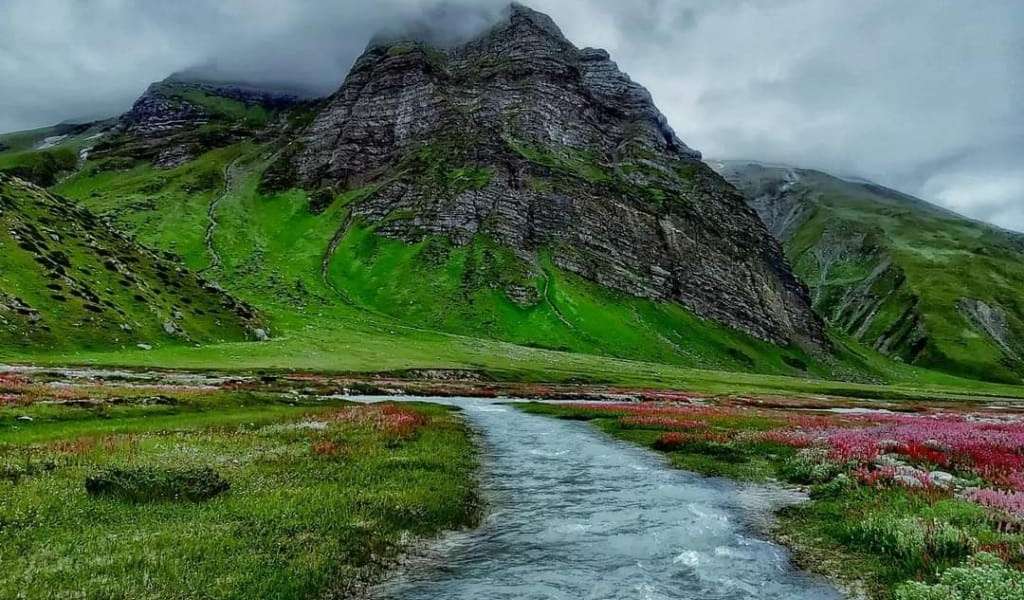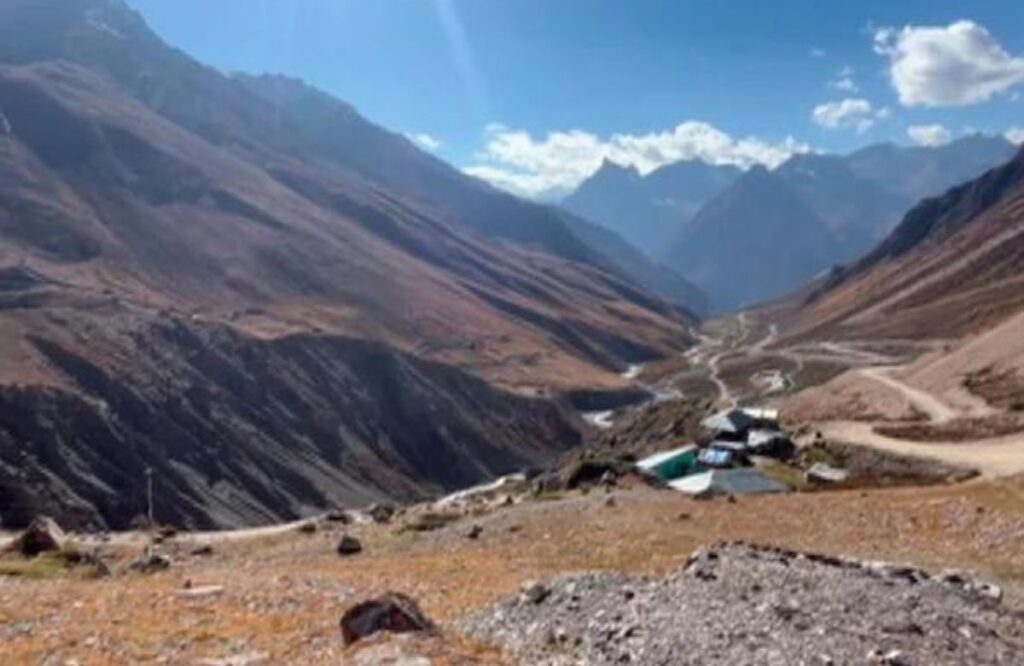Morning in Chopta
The first time I woke up in Chopta, it was still dark. Not silent though. A dog barked somewhere down the slope. Wind pushed against the tin roof. The air was cold enough to sting my nose.
By the time light began to spill, everything turned soft. Frost on the grass. Smoke curling from a small kitchen fire. Someone banging a steel pot to call children in. That’s Chopta. Quiet, small, alive in its own rhythm.
At 2,600 meters, you already feel higher than the world you left behind. Here the forest is thick देवदार (deodar), बुरांश (rhododendron), pine. When you breathe, it tastes of resin and wet earth.
The Stories That Travel With You
People don’t come here only to trek. They come chasing stories.
They say Shiva, tired of the Pandavas after the Mahabharata, disappeared into these mountains. His body appeared in parts at five places the Panch Kedar (पंच केदार). At Tungnath, it is believed his arms rest.
And Chandrashila, the “moon rock”. Some say Chandra himself prayed here to rid his curse. Others say Lord Rama sat in penance after the war with Ravana. You walk with these stories whether you believe them or not. They make the climb feel heavier, and also lighter.
The Path Begins
The trail from Chopta starts soft. Wide meadows called bugyals (बुग्याल) spread open like green carpets. In spring, they are dotted with red rhododendron flowers. Cows graze slowly, bells clinking. A shepherd waves at you.
Then the climb sharpens. Stone steps, uneven, rising through the forest. Pines stretch tall. Mist drifts between trunks. Sometimes it clears and you catch sight of a faraway white peak. You rest. Sip water. Watch clouds move faster than you.
It isn’t just walking. It’s bargaining with your legs, with your breath. You take ten steps, then stand still, pretending to admire the view when really your heart is pounding.
Tungnath Temple
After a few hours, a stone roof appears ahead. A bell clangs in the wind. You’ve reached Tungnath.
It is the highest Shiva temple in the world, but not grand in size. Small, compact, built with stone blocks that look like they’ve been there forever. The wooden door frame is worn smooth by centuries of hands.
Inside, the Shivling (Shivling) is simp
You step out again and suddenly realise where you are. Peaks open up in every direction. Chaukhamba, Trishul, Nanda Devi if the sky is clear, they stand tall like white flames.
The Last Climb to Chandrashila
From Tungnath, Chandrashila looks close. Just over there. But the path is steep, and at this altitude every step feels doubled.
It takes patience. The wind grows sharper. Stones crunch under your shoes. Sometimes frost makes them slippery. But you keep going.
And then, at 3,690 meters, the world opens. Chandrashila. A ridge, a small temple on top, and a view that silences everything.
At sunrise, the peaks turn golden first, then pink, then white again. The light spills like liquid over the Himalayas. For a moment you forget your aching legs. You forget everything. You just stand there, breathing hard, whispering हर हर महादेव.
What the Trek Really Feels Like
It’s not a brochure trek. It’s raw. You get wet shoes from dew. You smell cow dung in the meadows. Your jacket soaks with sweat even though the air is freezing.
They You laugh with strangers on the way. You stop to catch your breath and they stop too, pretending they also needed a break. That’s how bonds form on a mountain.
At Tungnath, when bells ring together, it feels like the stones vibrate under your feet. At Chandrashila, the silence feels louder than any sound.
Best Time to Go
- April to June: Clear skies, rhododendrons in bloom.
- September to November: Sharp air, wide views, less crowd.
- Winter: Heavy snow, the trail to Tungnath sometimes buried. Magical, but only if you know what you’re doing.
- Monsoon: Rain makes everything slippery. Landslides on roads. Misty, but risky.
Things You Must Carry
- Warm clothes. Even summer mornings bite.
- Strong shoes with grip. Your ankles will thank you.
- Water and a little snack. Energy comes quick, goes quick.
- Rain cover if clouds look moody.
- Small offering if you plan darshan at Tungnath.
Where You Sleep and Eat
Chopta has wooden huts, small guesthouses, camps pitched on bugyals. Don’t expect luxury. Expect dal, rice, chapati, sometimes Maggi. Expect thick blankets, a cold washbasin, and a sky full of stars.
At night, when wind shakes the roofs, you wrap tighter into quilts and listen. In the morning, you wake to birds and smoke rising from the first fire of the day.
Why This Trek Stays
- Because it makes you small, and that is freeing.
- Because it gives you stories, and also silence.
- Because at Chandrashila, when you look out at the Himalayas stretching into forever, you realise no camera can catch it, no words can fit it.
- It stays because it is not just a trek. It is a reminder. Of breath, of effort, of faith, of how the world can still surprise you.
Walking Back
The return feels easier, but also heavier. You don’t want to leave. Legs ache, but heart resists. You look back often at Tungnath roof, at the ridge of Chandrashila.
By the time you reach Chopta again, the sun is low, the tea hot, and you sit with strangers who are no longer strangers. You laugh, share biscuits, complain about sore knees. And inside, you know you’ll carry this walk for years.
Closing
The Chopta Tungnath Chandrashila trek is not about distance. It’s about depth. About walking with myth and mountain, with your body and breath, with silence and prayer.
Go if you can. Go slowly. Go with respect.
Because when you stand on that summit, with wind cutting your cheeks and peaks glowing in light, you will know why people whisper महादेव here. And you will whisper it too.

